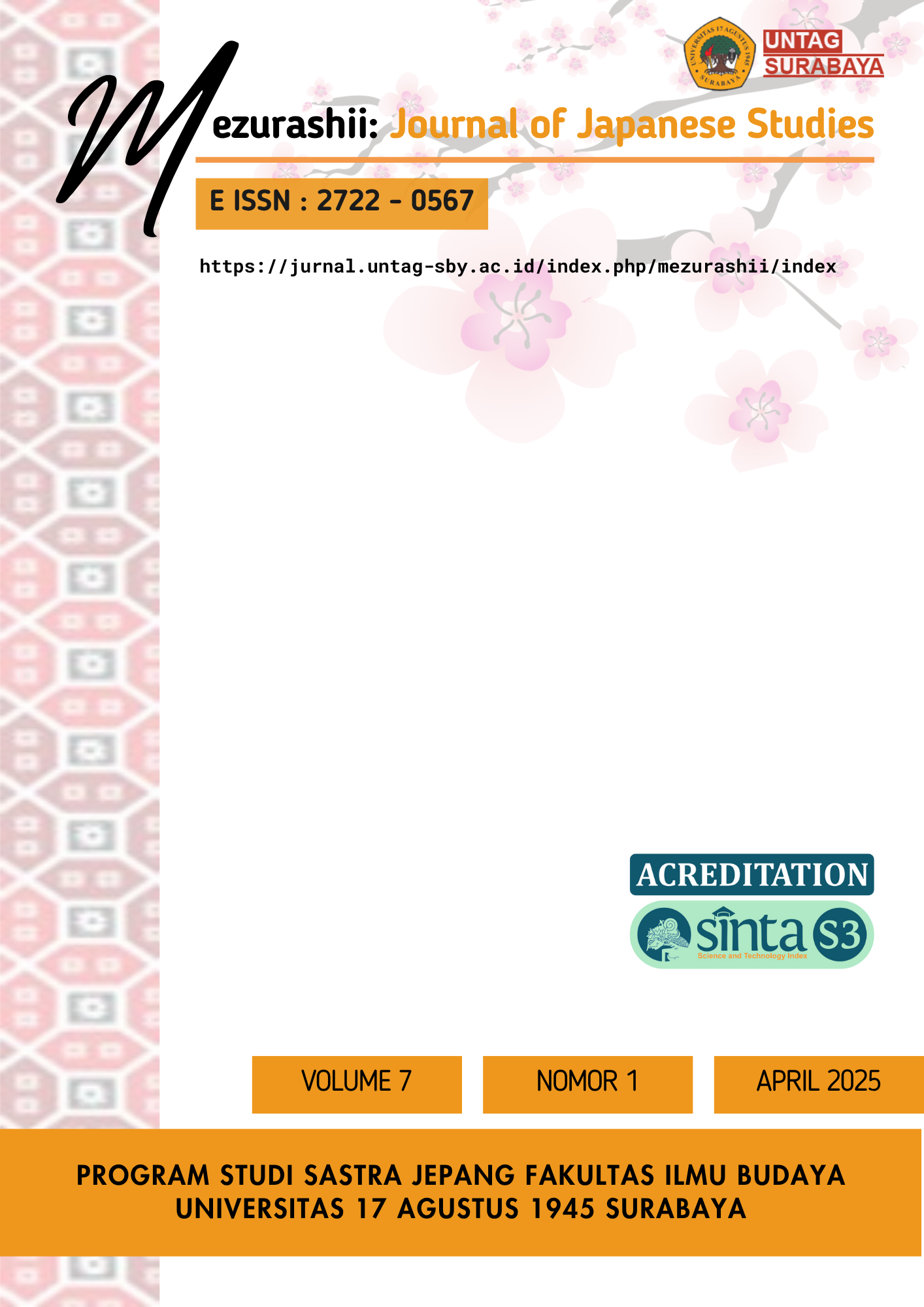Analisis Teknik Penerjemahan dalam Lirik Lagu "Arjuna" dan "Bento" Versi Jepang
Abstract
Song lyric translation is a complex process that involves not only linguistic aspects but also musicality and cultural acceptability in the target language. This study aims to analyze the translation techniques used in the Japanese versions of the songs Arjuna and Bento, based on Molina and Albir’s (2004) translation techniques. A qualitative descriptive method was employed, with textual analysis conducted on the original Indonesian lyrics and their Japanese translations. The findings reveal that 13 translation techniques were utilized in both songs, with different dominant techniques corresponding to the characteristics of each song. Arjuna, which has a romantic and poetic theme, predominantly employs established equivalence, amplification, and transposition to preserve the song’s aesthetics and emotional meaning. In contrast, Bento, which carries a strong social critique, primarily employs modulation, adaptation, reduction, and linguistic compression to align its meaning with Japanese expressive norms. These findings suggest that in song lyric translation, the choice of translation techniques is significantly influenced by the song’s theme, syntactic structure, rhythm, and cultural acceptability in the target language. This study is expected to contribute to research on song lyric translation and provide insight for translators in adapting songs across languages while maintaining their meaning, aesthetics, and musicality.
Downloads
Copyright (c) 2025 A. Alfandy Jaharuddin, Kasmawati Kasmawati, Taqdir Taqdir

This work is licensed under a Creative Commons Attribution-ShareAlike 4.0 International License.
Authors publishing in the Journal will be asked to sign a Copyright Assignment Form. In signing the form, it is assumed that authors have obtained permission to use any copyrighted or previously published material. All authors must read and agree to the conditions outlined in the form, and must sign the form or agree that the corresponding author can sign on their behalf. Articles cannot be published until a signed form has been received.It is a condition of publication that authors assign copyright or license the publication rights in their articles, including abstracts, to email jurnalmezurashii@untag-sby.ac.id. . This enables us to ensure full copyright protection and to disseminate the article, and of course the Journal to the widest possible readership in print and electronic formats as appropriate.








